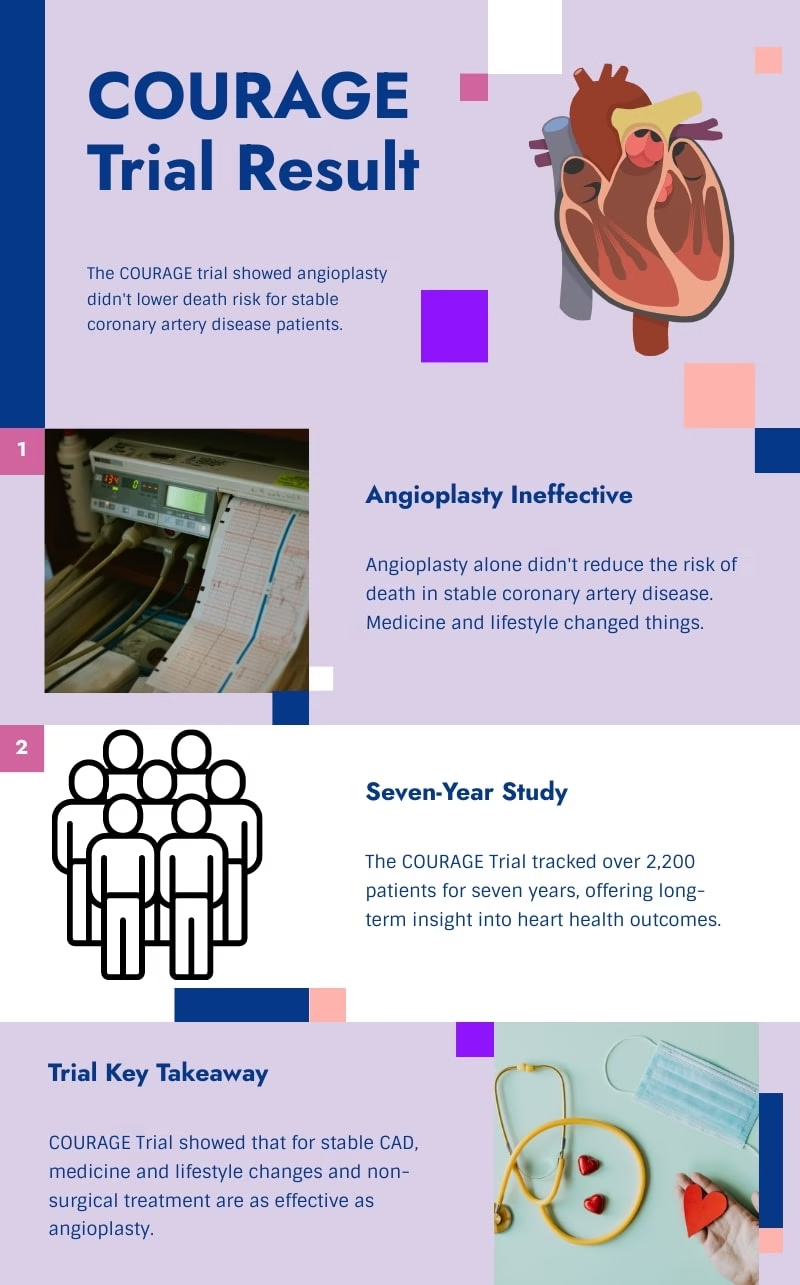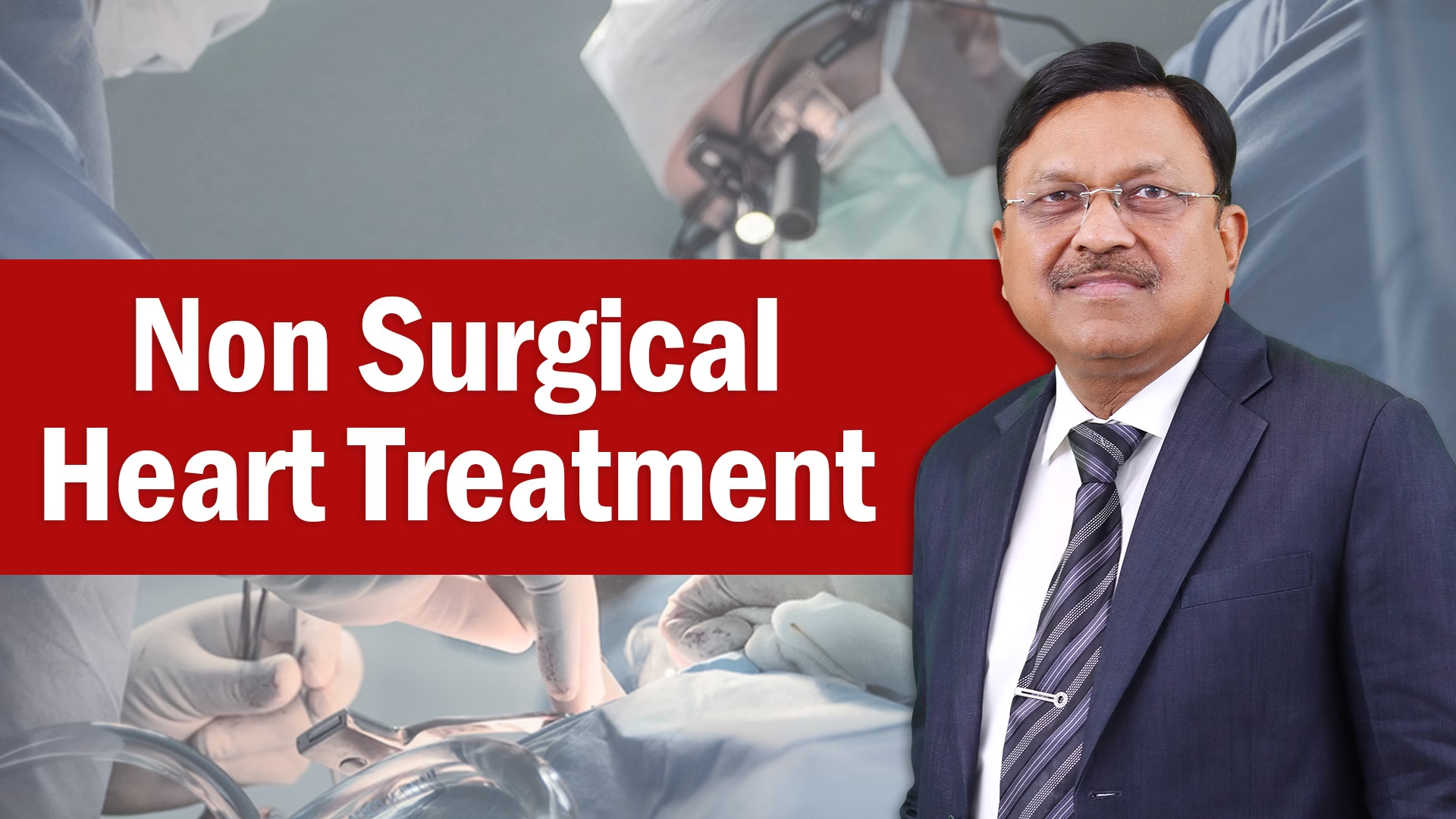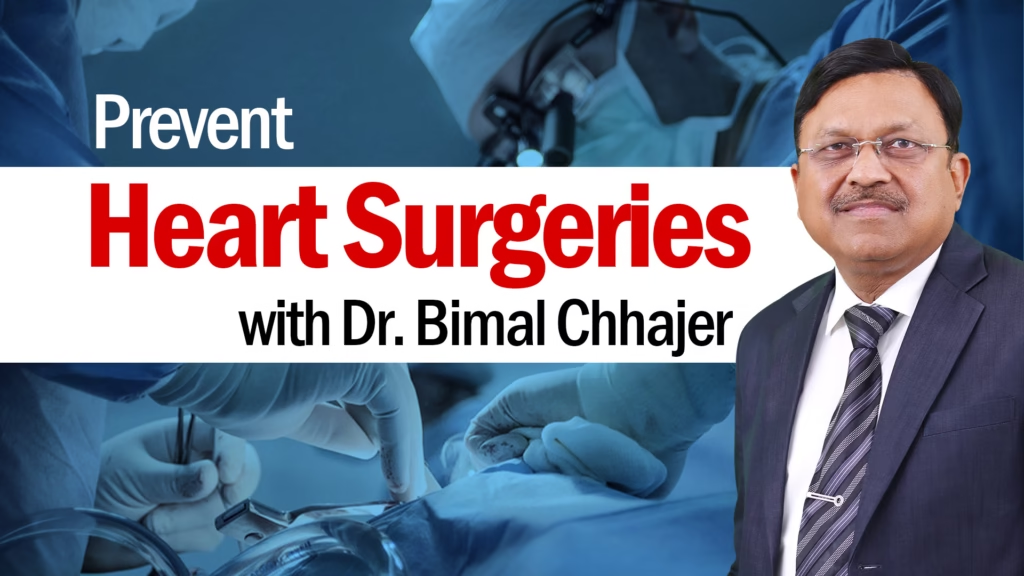Let’s begin with a thought:
If you have a prescription for angioplasty in one hand and terror in the other, what if you aren’t alone? What if that fear is valid?
At SAAOL Heartcare Delhi, Dr Bimal Chhajer’s appointments had thousands walk in trembling, not just because of their chest pain but also because they were petrified by the thought of a chest being cut open. Angioplasty. Bypass Surgery. Big words. Bigger consequences. But here is something they won’t tell you in the average 10-minute hospital OPD visit: an angioplasty is not always required, even if you have heart blockages. And that’s not just a point we’re making. It is a truth supported by science, global cardiac trials, and the testimony of lived patient experience. This is why non-surgical heart treatment, such as EECP treatment in Delhi/NCR, which has been proven to be a safer alternative to bypass surgery, is becoming increasingly popular. Because when the stakes are this high, you deserve all the facts, not just the surgical sales pitch.
Angioplasty Isn’t Always Life-Saving
Did you know that in stable heart patients (meaning, no ongoing heart attack), angioplasty does not reduce the risk of future heart attacks or extend life expectancy?
Let that sink in.
The massive, multi-center study, the COURAGE Trial, tracked over 2,200 patients for 7 years and reported that:
“In patients with stable coronary artery disease, angioplasty did not reduce the risk of death, heart attack, or major cardiovascular events when compared to optimal medical therapy.”

But more than 1.5 million angioplasties are performed every year around the world. Many in India. Many without even seeing whether it’s necessary. So why does this happen? The answer is complex, but at the center of it is a healthcare system often driven by procedure-based billing, not necessarily outcome-based healing.
Important Questions to Ask Your Cardiologist Before Angioplasty
Let’s break this down into simple terms. You’ve got chest pain. You go for an angiogram. The report reveals that one of the arteries is 70% blocked.
Boom, angioplasty is advised.
But ask this:
- Are you having a heart attack now?
- Are you unstable or collapsing?
- Is your heart function drastically reduced?
If the answer is no, then why are we in such a hurry?
In Dr. Bimal Chhajer’s appointments at SAAOL Heartcare Delhi, he instructs, most heart blockages don’t block blood like a cork in a bottle. Your heart has collateral circulation, natural bypasses that develop over many years. If you’re stable, these may be doing just fine to nourish your heart.
What Causes Heart Attacks?
Some heart attacks do not occur because of 90% or 100% blockages. They occur at spots with plaques present at 50-70% (with the plaque then rupturing), which results in a blood clot.
So, what does this mean? A perfectly “stented” artery today doesn’t mean you’re immune to a heart attack tomorrow. Angioplasty treats a spot. But heart disease is a process. A lifestyle disease. This is where the heart disease treatment without surgery plays a significant role. We concentrate on reversing the root cause-cholesterol overload, inflammation, stress, diabetes, and lifestyle.
Because the real cure is not just a stent. It’s a sustainable change.
When Angioplasty Is Actually Needed?
Let’s be fair. In some cases, Angioplasty is life-saving. Here’s when it’s non-negotiable:
- You’re having a heart attack right now (Acute Coronary Syndrome)
- There is cardiogenic shock, extremely low BP, or collapsing circulation
- There’s unstable angina with multiple hospitalizations in a short time
- Your EF (ejection fraction) is severely compromised, and medications fail
In such acute or emergency settings, angioplasty can be a matter of life and death.
But this is the minority of cases of heart disease. Most are chronic and stable, and can be reversed naturally, with commitment and the right guidance.
The SAAOL Approach by Dr. Bimal Chhajer: Reverse Heart Disease Without Surgery

At SAAOL Heartcare Delhi, our philosophy is simple:
Don’t cut the body when you can heal it. Founded by Dr. Bimal Chhajer, a former AIIMS expert. Dr. Bimal Chhajer’s appointments include:
- EECP Treatment in Delhi/NCR – A U.S. FDA-approved, non-invasive therapy that naturally improves blood flow to the heart. No surgery, no pain.
- Lifestyle Reversal Programs – Tailored diets (zero oil), stress management, exercise, yoga, and meditation.
- Medical Management – Advanced, customized medicines that stabilize plaques, reduce inflammation, and lower cholesterol.
- Heart Education – We don’t scare patients. We educate them to become the master of their heart health.
Over 6 lakh patients have avoided bypass surgery and reversed heart blockages, improved ejection fractions, and reclaimed their lives without a scalpel.
Can Heart Blockage be Reversed?
Yes. And it’s not a marketing stunt.
In a landmark study conducted by Dr Dean Ornish, patients with severe coronary artery disease were enrolled in a total lifestyle regimen (diet, exercise, meditation). After 1 year:
- 82% showed regression of blockages
- Cholesterol dropped
- Angina reduced
- No surgery was needed
Its Indian version is SAAOL, which has been custom-tailored very specifically for the lifestyle, food habits, and culture in India. Combine it with EECP treatment—an evidence-based non-surgical heart treatment that works like a “natural bypass, and you’ve got potent heart healing without ever admitting to the hospital.
India performs over 300,000 angioplasties every year. In Delhi/NCR alone, the number is exploding. But the oversight is that many patients are not told that angioplasty doesn’t guarantee safety from future heart attacks. Most are unaware of non-invasive alternatives like EECP. A large percentage end up with re-stenosis (re-blockage) within 1-2 years
The average cost of angioplasty in India ranges from ₹2 to ₹5 lakhs, excluding follow-up medications and possible repeat procedures.
Meanwhile, EECP treatment cost in India is at a fraction of this and leads to better long-term heart resilience, with zero surgical risk.
FAQs — EECP treatment and more
Q: Is EECP proven? Or is it just “alternative”?
A: EECP is U.S. FDA-approved, backed by over 190 published studies. It improves oxygen delivery to the heart and helps form new arteries—angiogenesis. Not “alternative”—it’s advanced.
Q: If I already have a stent, can I still do non-invasive treatment?
A: Absolutely. We help post-angioplasty and post-bypass patients avoid further procedures by stabilizing and reversing the rest of their disease.
Q: Is a zero-oil diet extreme?
A: Not at all. It’s therapeutic. Think of it like a medicine, temporary for some, lifelong for others. It’s tasty too. Come for a consultation at SAAOL and see for yourself!
When is Angioplasty Truly Needed, As Told by Dr. Bimal Chhajer
Let’s summarize the SAAOL truth:
- Yes, if you are in the middle of a heart attack or you are collapsing
- No, if you’re stable, and haven’t attempted lifestyle modifications + EECP + medications instead. If someone recommends surgery in haste, take a second opinion.
Take time. Ask questions. Your heart deserves clarity, not panic.
Want to Explore Non-Surgical Heart Treatment in Delhi/NCR?
Kindly book for Dr Bimal Chhajer’s appointment with the SAAOL Heartcare Delhi team.
- Medical history review
- Diet Consultation
- EECP sessions
- SAAOL Detox Therapy


